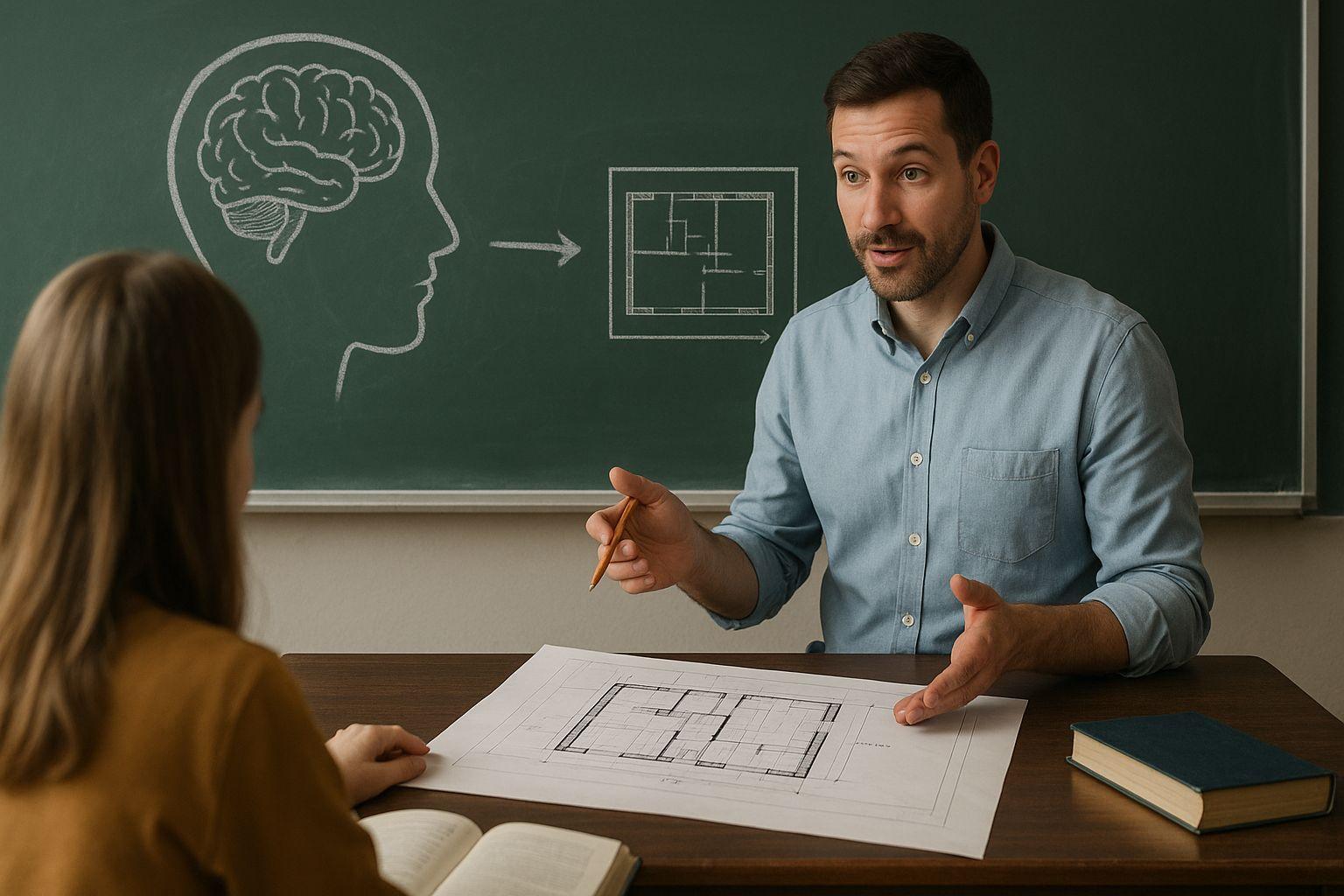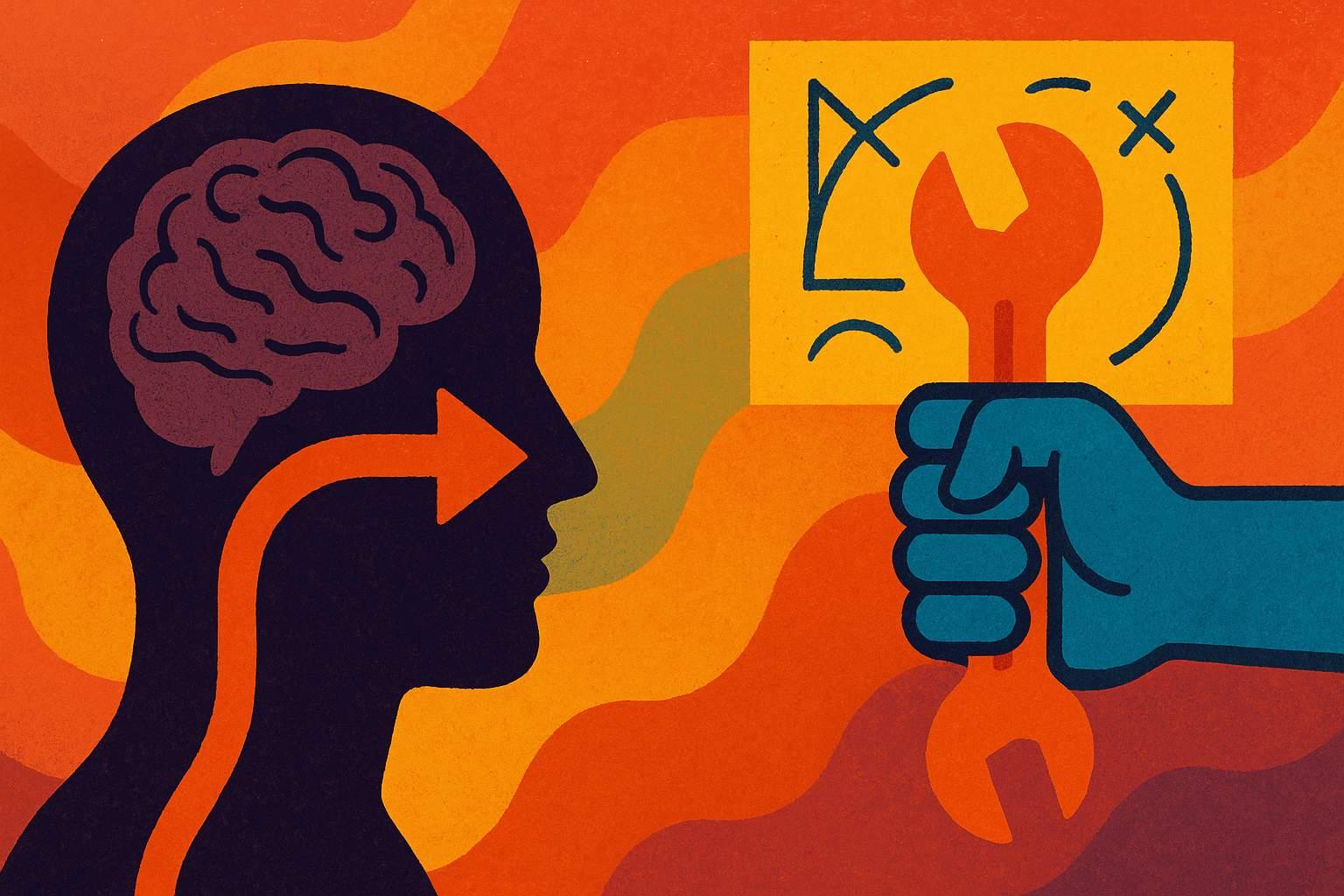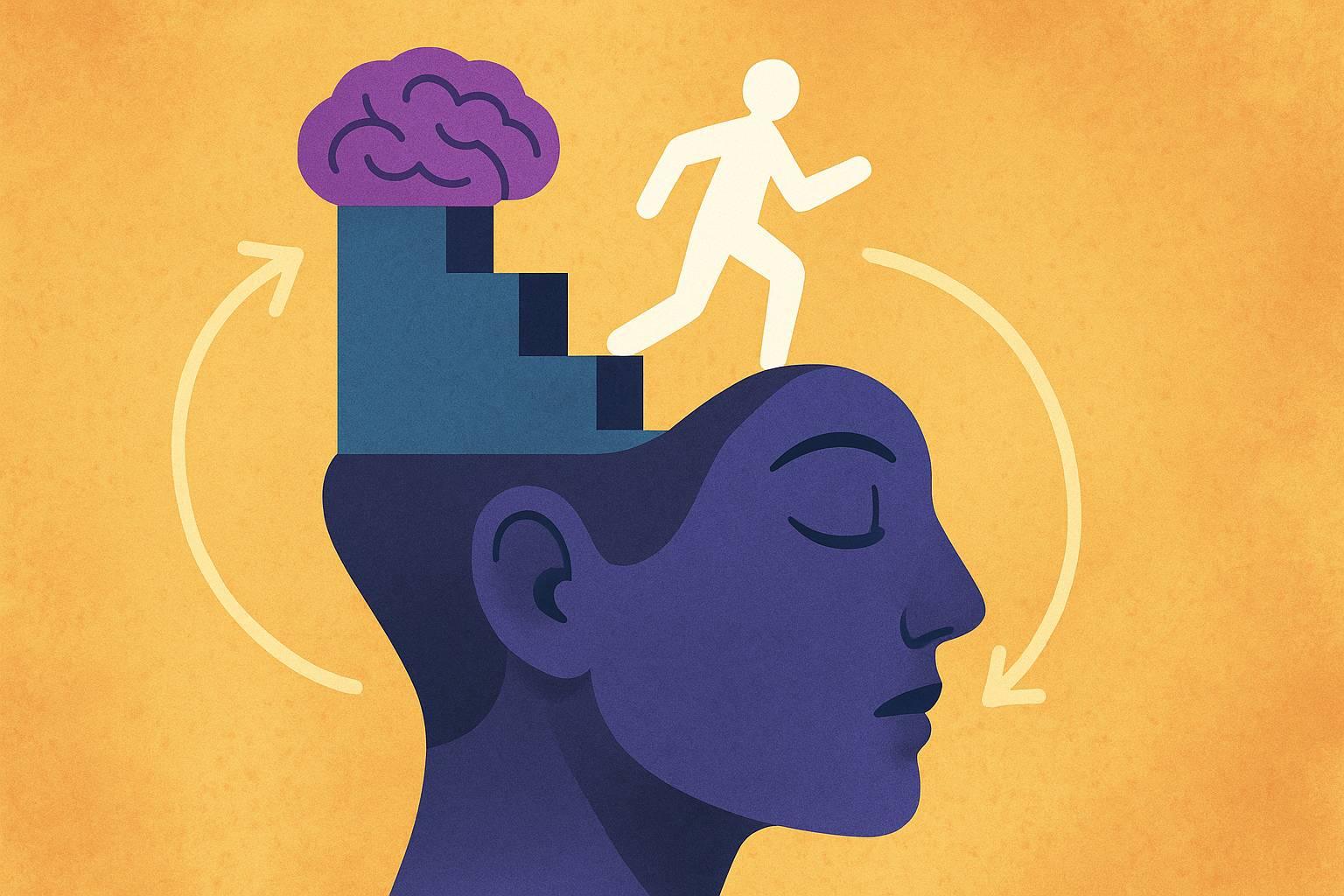What are mental models in teaching? They’re the mental maps students and educators build to understand the world. These models shape how we interpret everything from scientific processes to historical events.
Research from learning theories shows mental models are dynamic, evolving as learners gain experience.
Imagine a history teacher with thirty-seven years of experience. They organize American history lessons around the theme of Americans striving for their “share of the American pie.”
This approach isn’t just storytelling—it’s using mental models. These are cognitive frameworks that turn abstract concepts into relatable narratives.
By framing the past through a familiar metaphor, students grasp how struggles for equality, innovation, and justice repeat across centuries. This is the power of mental models in teaching: they turn complexity into clarity.
Key Takeaways
- Mental models in teaching simplify complex ideas by linking them to familiar concepts.
- Focus on the 20% of key concepts (Pareto Principle) to achieve 80% of learning outcomes.
- Scenario-based learning lets students test mental models against real-world challenges.
- Reflection activities, like journaling, help refine how learners connect new knowledge to existing beliefs.
- Visuals and metaphors make abstract theories, like photosynthesis, easier to grasp and remember.
What Are Mental Models in Teaching? Understanding the Foundation

Mental models in teaching are like blueprints for students to understand new information. These education models help learners connect new ideas to what they already know. For example, when a student solves a math problem, they use their mental framework to apply formulas correctly.
This idea is central to cognitive frameworks that make learning effective.
The Cognitive Science Behind Mental Models
Mental models are built through experiences. When teachers match lessons to students’ prior knowledge, students remember more. For example, studies show a 172% average boost in decision-making skills among medical trainees using these methods.
Teachers can help by addressing gaps between what experts know and what students know. As Scott H. Young explains, effective mental models simplify complex ideas, making them easier to understand.
How Mental Models in Teaching Shape Student Understanding
Students filter new information through their existing mental models. If their understanding is incomplete, they might hold onto misconceptions. For instance, a physics student might struggle with gravity until their mental model evolves.
Teachers can help by asking questions that reveal gaps in understanding. This process—create, test, refine—mirrors how scientists update theories. Feedback loops, like those used in immersive learning platforms, speed up this growth.
Mental Models in Teaching vs. Traditional Teaching Frameworks
Traditional teaching often focuses on memorization, while mental models focus on understanding. For example, a history lesson might focus on memorizing dates or analyzing cause-and-effect relationships.
The latter helps build adaptable thinkers.
Studies show students are more likely to choose new therapies after adopting model-based methods. Personalized instruction helps avoid the “mental model inertia” where learners stick to outdated ideas. This approach aligns with Next Generation Science Standards, which emphasize model-building as key to scientific literacy.
The Power of Mental Models in Your Classroom

Imagine a classroom where students connect ideas effortlessly. Mental models turn abstract concepts into tools you can use daily. By aligning teaching strategies with how minds naturally organize information, educators create pathways for lasting understanding.
When students encounter conflicting ideas, mental models help them reconcile differences instead of resisting change. This process reduces confusion and boosts retention.
Research shows 83% of students using mental models reported higher engagement. One school saw students link themes like gender and power across English texts, transforming isolated lessons into cohesive narratives.
Teachers who adopt these pedagogical approaches report fewer knowledge gaps. For instance, retrieval practice tasks revisiting past vocabulary boost current lesson absorption by 30%.
“Systems thinking reveals hidden patterns in learning challenges,” says KnowledgeWorks, highlighting how rethinking mental models drives educational equity. A case study on disciplinary practices shows educators using these frameworks identified biases in suspension policies, fostering fairer school cultures.
Effective instructional techniques like mental models also cross disciplines. Science teachers use them to explain ecosystems, while history classes apply them to trace cause-effect relationships across events.
This interconnected approach mirrors how minds truly learn—through connection, not isolation. Visit this guide to explore real-world implementation steps.
Start small: map your lesson plans to student mental models. Notice how students’ existing beliefs shape their learning paths. By addressing cognitive dissonance proactively, you build classrooms where curiosity thrives.
Every adjustment to your teaching strategies empowers students to see knowledge as a living, evolving system—not static facts.
Key Types of Mental Models That Transform Teaching
Good teaching needs flexible teaching methodologies based on solid cognitive frameworks. Discover four models that boost student interest and critical thinking. They change how you use education models in your classroom.

Analogical Mental Models
Analogies make hard ideas easier. For example, comparing electricity to water flow helps students understand circuits better. B
ut, avoid stereotypes by using proven teaching methodologies. Richard Feynman used analogies to learn Advanced Calculus on his own.
“The difference between successful outcomes often comes down to which mental models you apply.”
Systems Thinking Models
Systems models show how parts work together. When teaching about climate change, show how CO2 emissions affect ice caps.
This fits with cognitive frameworks that link different subjects. Imagine a science lesson where students design cities, using models of infrastructure and ecology.
Decision-Making Frameworks
Teach students to make smart choices with tools like cost-benefit analysis. Explain how hyperbolic discounting leads to quick decisions. Use survivorship bias to study history. These tools help students think critically, like Feynman did.
Conceptual Learning Models
Start with basic ideas. When teaching fractions, begin with the “part-whole” concept before moving to equations. This approach is like the Mental Model Learning Framework, which helps teachers better support students.
Make sure each lesson builds on what students already know.
Begin with one model next week. By using these frameworks, your classroom will be a place of curiosity and discovery. Every student will see their chance to change the way we learn.
Using Mental Models Across Different Teaching Styles

Effective pedagogical approaches work best when mental models are part of everyday teaching. Think about teaching strategies like project-based learning. Here, students learn by doing real tasks.
Begin by planning projects that match basic concepts. For example, a science project on ecosystems can use analogies.
This helps students connect new info to what they already know. Helene, a teacher, saw her confidence grow after a course. She now feels better at leading open-ended tasks.
Inquiry-based education is great for sparking curiosity. Start by asking questions that make students think. Boris, a teacher, changed his ways to make his classroom more interactive. He found that using mental models helped his students understand better.
Differentiated instruction gets easier when you adjust mental models for each student. A teacher might use diagrams for some and role-playing for others.
By breaking tasks into smaller steps, you help students build their mental models. Remember, mental models change as students grow. So, keep checking and updating them to match your students’ progress.
How Mental Models Improve Learning Outcomes

Understanding how mental models enhance learning begins with knowing what they are in teaching. These frameworks help students learn and apply knowledge better. Tools like performance tasks and concept maps show more progress than just exams.
For example, medical students using these tools saw a huge improvement. They made decisions 172% better and adopted new therapies 2.5 times more. This shows how effective teaching methods can be.
Facilitative questioning sessions, lasting just 7 minutes, reveal over 20 mental models quickly. These insights help teachers adjust lessons to fill knowledge gaps. Simulations, another key tool, let students practice safely.
Research shows these methods reduce knowledge loss by half compared to lectures. This is a big win for students.
“Mental models evolve through practice, not memorization,” shared in global case studies from “Schools That Deliver.” “This evolution drives long-term skill retention.”
Show stakeholders how these strategies work. Highlight metrics like improved problem-solving and knowledge transfer. Aligning with learning theories means you track growth beyond test scores.
By using both formative and summative assessments, you capture the full picture of student progress. This proves mental model approaches boost real-world readiness.
When Annika and Anthony, two leaders, focused on different priorities, their teams saw varied outcomes. This shows how aligning teaching with mental models matters.
Simulations and questioning aren’t just methods—they’re bridges between theory and action, turning abstract concepts into measurable results.
Conclusion
Using mental models can change how you teach. A study with 10 teachers showed that focusing on storytelling in teaching made them more adaptable. This way, teachers can make their teaching methods better match real-life learning needs.
Imagine a classroom where teachers keep improving their teaching methods. Studies on teaching plant nutrition show that this approach helps fix wrong ideas and meets student needs.
By always looking to improve, teachers can make sure all students do well, no matter the classroom size or resources.
Learn how mental models fit into today’s teaching by reading this study on collaboration and mental models. Start with small changes, like improving one lesson or planning with systems frameworks.
These small steps can lead to big improvements in teaching and student success. By using mental models, teachers don’t just teach facts. They prepare students for the future.
Source Links
- How to Use Mental Models for Better Learning
- Deep learning 3: teaching to develop students’ mental models – responsive teaching update
- How L&D Can Use Mental Models to Support Workplace Learning | Litmos Blog
- Mental Models: The Secret to Effective Education and Training Outcomes
- Instructional Design for Science Teachers: Using the Idea of Mental Models to Drive Learning
- Mental Models and User Experience Design
- Using the science of mental models in my classroom
- Changing Our Own Mental Models Before Changing the Education System
- Shifting Mental Models in Educators
- How to Train Your Brain to Think in New Ways
- 30 mental models to add to your thinking toolbox
- MENTAL MODELS OF TEACHING AND LEARNING WITH THE WWW
- Designing Learning for Mental Models
- Understanding and Applying Mental Models In Learning
- For True School Change, Understand Your Mental Models – Corwin Connect
- How Mental Models Help Your Learners Thrive | The Regis Company
- Teachers´ Practices and Mental Models: Transformation Through Reflection on Action
- Mental Models in Improving Learning
- Unveiling Students’ Mental Models and Learning Demands: an Empirical Validation of Secondary Students’ Model Progression on Plant Nutrition – Research in Science Education


